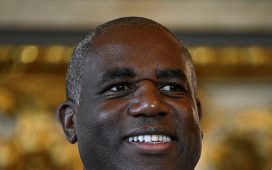After 25 years and approaching 300 articles I am writing my last portfolio update for the FT. It has been a huge privilege and pleasure to have written for so long.
As I have made clear in my columns, the stock market has been a large part of my life, particularly my Isa and its precursor, Peps. Sometimes I am tempted to describe myself as a “professional Isa investor”. Indeed, when my granddaughter was born, I suggested she should be called Isa. This was not well received by her parents, who sensibly named her Florence.
Over my 65 years of investing I have been called many things — the most flattering being in recent years the “David Attenborough” of investing — though I can imagine some of the less-generous language used by investors when my recommendations have lost them money.
However, overall I believe we have had many more successes than failures. In 2003 I was declared the first Isa millionaire and shared with FT readers my complete portfolio. This had grown from £126,000 invested, plus crucially reinvested dividends, over the first 15 years of Peps and Isas. Pleasingly, its value has appreciated well northwards.
Now, in my 83rd year, I am still full of enthusiasm and ideas. After all, Warren Buffett is still going strong at 94! FT readers and others are able to hear some of them in my monthly podcasts with the Investors’ Chronicle — “Lee and the IC”.
Experience has convinced me that there are only two essentials to successful stock market investment — common sense and, above all, patience. Value always comes through in the end, although some shareholders will have died waiting!
There are four shares that appeared in that 2003 Isa portfolio that I still own — Christie, Nichols, Treatt and PZ Cussons (the latter very disappointing in recent years). Many, like Air Partner, Charles Taylor, GET, Tarsus, Windsor and Wintrust were taken over — some of the 60-plus takeover or “take private” deals I have experienced, providing liquidity for reinvestment.
Some bids were exceptionally profitable: Fenner I first bought in 2008 at 60p when very depressed in the subprime bear market; I sold in 2014 at around 350p. More recently, I sold Lok’nStore at over £11 earlier this year after first buying it at 135p in 2013. This latter bid pot — my largest ever — allowed me to top up my holdings in the rest of my portfolio. Unfortunately, most Lok’nStore were outside my Isa, thus a large capital gains tax liability arises, even before Rachel Reeves gets to work!
I only invest in UK-listed companies, enjoying the relationships with them and their chief executives. My focus is on “proper” businesses that I can understand — those that are established, profitable, dividend-paying, ideally cash-rich or lowly geared. I eschew biotechs, start-ups, exploration and mining stocks as they require specialist knowledge.
I particularly like to see key executives with big holdings — “skin in the game” — and the bigger the better, so I follow directors’ deals closely. I was recently encouraged to see Braemar chief executive James Gundy adding to his holding; and David McCreadie and his wife, of the Secure Trust bank, investing over £100,000.
One of my current campaigns is to pressure non-executive directors to invest in the companies on whose boards they sit. These days they are paid quite generously — £50,000 a year — even £100,000 in small-cap companies, yet many have zero shareholdings. In my view NEDs should have at least 25 per cent of their annual salary invested by the second year of their appointment, demonstrating faith and commitment.
Of course, over the years I have made many mistakes. If anything I am probably too loyal to poor performers, but my biggest mistake has been selling great growth shares too soon, like Clarkson and James Halstead. Others where I just got it plain wrong include newspaper and magazine distributor Dawson Holdings, destroyed by competition from Smiths and Menzies; and HMV, when I was foolishly seduced by the then high yield. So, apologies to readers who were similarly bruised.
Probably my biggest unresolved challenge is how to handle runaway successes; the real kicker to a share price is the double-whammy of profits growth and an upward re-rating, but the converse can be very bloody. I first bought flavours and fragrances maker Treatt in 1999 at the equivalent of 30p, buying more on 30 occasions. As it grew I sold 20 per cent between £4 and £11 during 2020-21 — their shares peaking at £12 made it by far my biggest holding. Treatt’s profits then dipped, the shares savagely derating down to below £4. I clearly should have followed the then retiring finance director, at least in part, who sold most of his at £12.
Turning to my current “shooting star”, Cerillion, a provider of business services to the global telecoms sector, first bought on listing in 2016 at 84p, I added five more times to my holding, up to 173p. Substantial contract wins, profits and dividend growth, plus upward re-rating propelled the shares to over £19. With hindsight, I was clearly right to trim Treatt but so far not Cerillion. A very pleasant dilemma to have.
Over the course of my investing career, my biggest regret is not starting an investment fund or similar in which others could invest. I hope my articles have nonetheless given readers pleasure, interest and perhaps some profitable ideas.
Lord Lee of Trafford is an active private investor and a shareholder in all the companies indicated










